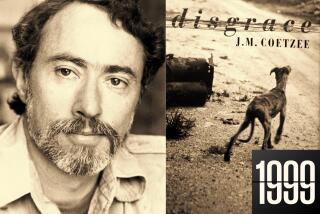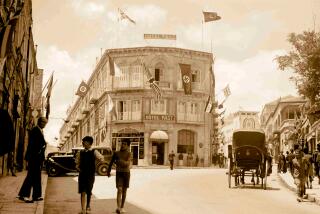Her brother’s keeper
By now the platitude about unremarkable second novels is so cliche, but there seems to be no better way to talk about Donna Tartt’s “The Little Friend.” Tartt is a gifted writer whose reputation is founded on her first and -- until now -- only novel, “The Secret History,” a cool, elegant thriller about a group of classics students at a small college in Vermont. Since its publication in 1992, it has spawned an international coterie of readers so devoted to Tartt that in July, Britain’s Observer reported rumors of a black market for English translations of “The Little Friend” in the Netherlands, where the book received early publication in Dutch. “Her writing is so strange, so memorable,” said the Observer, quoting one fan from an Internet chat room, “and she is such a beautiful person, that we know the book will be worth the trouble.”
Now “The Little Friend” has appeared in the U.S. and unfortunately does not live up to expectation. The novel, set in a small town in Mississippi, centers on Harriet Cleve Dufresnes, a tough, wily 12-year-old whose older brother Robin was, at the age of 9, hanged from a tree in his own front yard by a killer who remains at large. His death has shattered the Cleves, an old Mississippi family, already in decline after the Depression and a series of bad financial investments, and “The Little Friend” is in part a portrait of the strange, stagnant world inhabited by the survivors of a particularly awful event.
Harriet’s mother, Charlotte, has fallen into a hazy grief-stricken torpor, while Harriet’s father is estranged from his wife and daughters. Her sister Allison is a pretty, vague and haunted teenager whose sense of reality is dubious at best, and her grandmother and several great-aunts exist in various degrees of denial.
Harriet, only a few months old when Robin was killed, has no memory of her brother, but in a peculiar way this gap has served to bring him into sharper focus than any actual remembrance might have. Having grown up listening to the stories told by the adults around them, both Harriet and Allison, “who had never in any proper sense known him at all, nonetheless grew up certain of their dead brother’s favorite color (red) ... his favorite flavor of ice cream (chocolate).... Consequently their relationship with their dead brother was of the most intimate sort, his strong bright, immutable character shining changelessly against the vagueness and vacillation of their own characters .... [T]hey grew up believing that this was due to some rare, angelic incandescence of nature on Robin’s part, and not at all to the fact that he was dead.” In an effort to avenge this shining notion of her brother, Harriet decides to track down Robin’s killer, and the novel follows the haphazard scheming of her mission.
All of this sounds promising enough, but somehow the potential is lost in the execution. At the level of technical craft, Tartt is still a master of beauty, and this in conjunction with her sensitivity to loss and strangeness combines in peerless descriptions of the beloved and the grotesque: glass (“on the mantelpiece slumbered a chunky paperweight of aquamarine glass -- bubbled in its heart, filtering the sun like seawater”) or a crow’s ripped wing (“glossy red coils that looked like red toothpaste”). Her characters, particularly Harriet’s battle-ax grandmother, Edie, are drawn with a great deal of humor and sympathy, and she has a wonderful ear for dialogue, rendering Edie’s sly wit and Hely’s highly irritating pre-adolescent patter with brilliant accuracy.
But overall “The Little Friend” is a bit like a bad pointillist painting, each little dot drawn with exquisite care and yet not part of a recognizable whole. The book has trouble deciding what it would like to be. At times it presents itself as a mystery; at others it turns into a young-adult-type novel about coming of age. It timidly brings up the issue of race relations and class, but never in any interesting way. The story has moments of suspense, but they are undermined by a basic sluggishness.
It is also hampered by an overdependence on dreams. Harriet receives her injunction to go forth and deliver retribution in an extended hallucination involving Houdini and penguins; portentous dreams of darkness plague Harriet and others, including her suspect, Danny Ratliff, an acquaintance of her brother’s. The dream sequences are well written and suitably ominous, but the book is so cluttered with them that after a while one suspects that Tartt is compensating for a lack of excitement elsewhere.
Which isn’t to say that “The Little Friend” isn’t ambitious. Every so often, it aspires to the heights of philosophical profundity, soberly addressing the themes of memory, uncertainty, stories and truth, and while it seems well within the bounds of Tartt’s talent to incorporate everything -- philosophy, suspense, character, emotion -- into a very good novel, these elements are so badly integrated here that they cancel each other out. Occasionally laborious, often random, resolved in a kind of pat, over-intellectualized way, “The Little Friend” ultimately devolves into something well below its aims.
More to Read
Sign up for our Book Club newsletter
Get the latest news, events and more from the Los Angeles Times Book Club, and help us get L.A. reading and talking.
You may occasionally receive promotional content from the Los Angeles Times.





